Borneo!
I tried to visit once before, back in 2009. My buddy Phil and I wanted to see orangutans in the wild at Tanjung Puting National Park in Indonesian Borneo, but we couldn’t get the final flight we needed and ended up visiting Gunung Leuser National Park in Sumatra instead. That thwarted attempt seven years ago made Borneo seem even more remote and exotic, and I was excited that this trip provided a second chance to get there.
From Kuala Lumpur I flew to Kuching, the largest city in Malaysian Borneo. Kuching itself sounded interesting, but the real draw was the surrounding wilderness. Some of the best places in western Borneo to see nature and wildlife are less than an hour’s drive from Kuching, including the Semenggoh Wildlife Centre, Kubah National Park, and Bako National Park. I had more than enough time to check out all three.
On my first evening in Kuching I walked along the promenade that follows the southern bank of the mud-brown Sarawak River as it cuts through town. The waterfront is almost deserted during the day, but traffic picks up when the sun sets and the brutal heat takes a step back. Children bought ice cream cones from small kiosks, street musicians played pop songs, and old men dangled fishing poles over the railing.
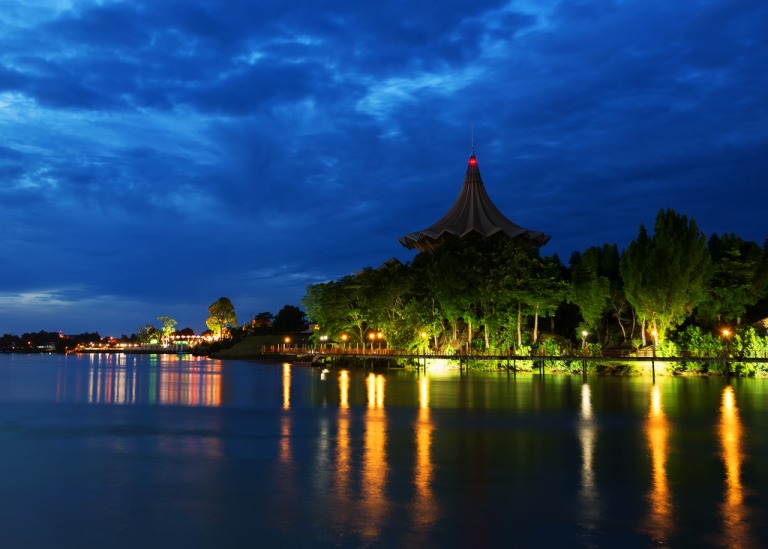

Initially I’d thought the best way to see the wilderness around Kuching would be to book tours. But a little research made it clear that it would be easy, and far cheaper, to handle the logistics myself. Public buses make regular trips to the places I most wanted to see, and the hiking trails are well marked.
So early the next morning I caught a bus to the Semenggoh Wildlife Centre, one of the few places in the world where injured and orphaned orangutans are rehabilitated and released back into the wild. Semenggoh’s orangutans are considered “semi-wild,” given that they live in the surrounding jungle but still visit the Centre for extra food most of the year.
Our bus hit heavy traffic on the way to the Semenggoh, which seemed strange for a Sunday morning. The source of the traffic turned out to be a cemetery. Cars overflowed the parking areas, and many of the individual gravesites were surrounded by big families. Strips of colorful paper were scattered on the ground, and in some places the families burned bags stuffed with small items. Thanks to a little Internet investigating that night, I realized that we’d seen people celebrating Qingming (also called Tomb-Sweeping Day or All Souls Day), a Chinese holiday dedicated to honoring your ancestors.
Despite the Qingming traffic we arrived at Semenggoh well before the 9am feeding. There were already two orangutans grabbing bananas from the park rangers.
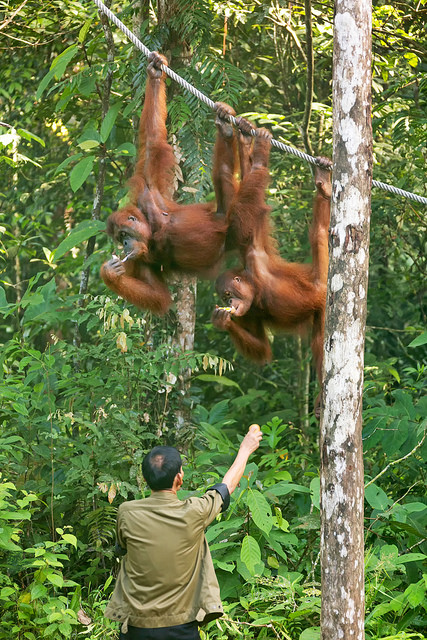
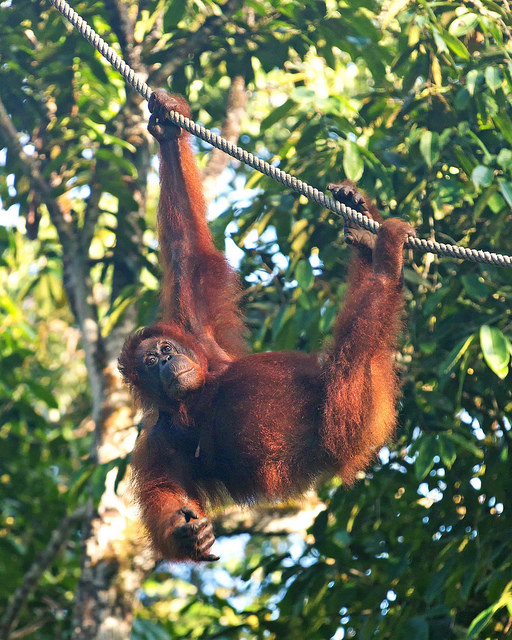

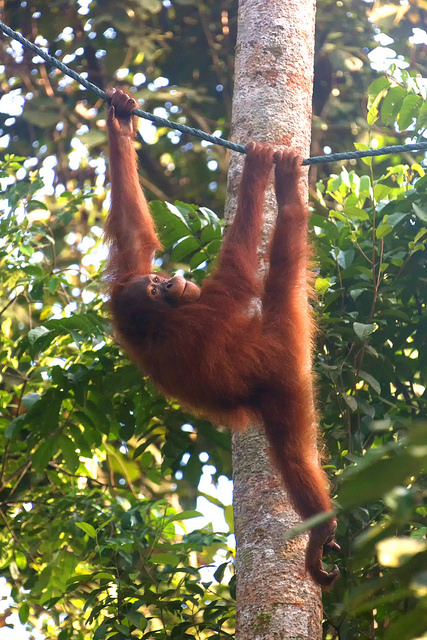
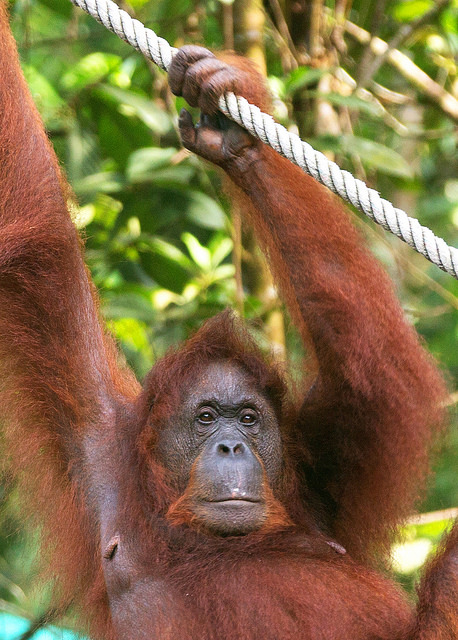
Later we saw one of the males at a different feeding platform, but the “big boss” alpha male never made an appearance.
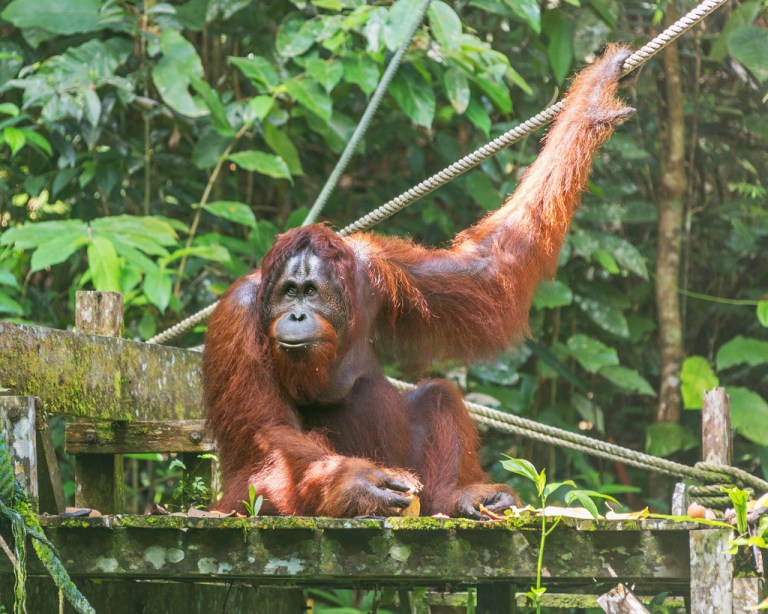
For some reason the Centre also had a pen with two crocodiles.
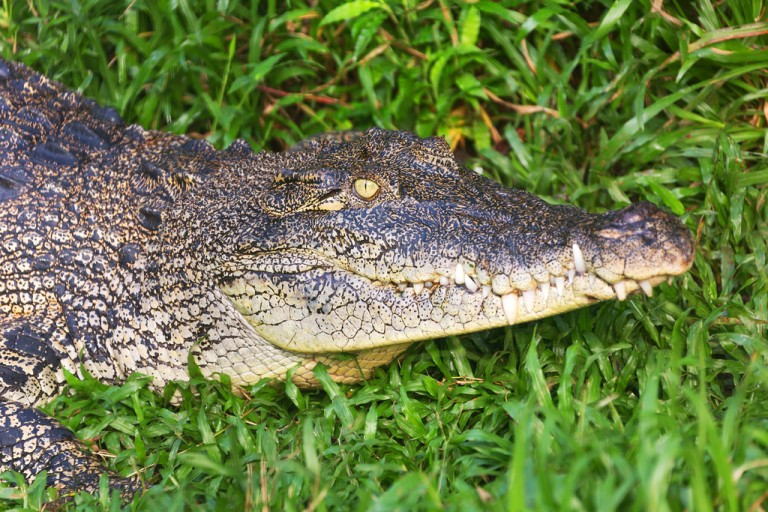
It was fun to see the orangutans, but Semenggoh wasn’t as cool as Gunung Leuser National Park, where you can do overnight treks into the backcountry and have a chance of spotting a truly wild orangutan.
Next up was Kubah National Park. Kubah would be less about spotting wildlife, which is difficult there, and more about being immersed in old-growth rainforest. According to Lonely Planet, “The park’s three mountains are a haven for mixed dipterocarp forest, among the lushest and most threatened habitats in Borneo.”
Again I caught an early-morning public bus, and by 9am I was at the park. There were no other tourists on the bus and during my entire stay in the park I only saw two other visitors. Taking the advice of the woman at the registration desk, I planned to hike to the end of the Waterfall Trail and then loop back on the Selang Trail. The initial part of the hike was all uphill, and in the punishing heat and humidity I sweat as much as I ever have in my life.

The jungle overwhelmed my senses. The scale of everything seemed larger. Trees shot up so high I couldn’t see the top. Insects droned as loudly as a plane engine. The smell of damp earth and decaying vegetation filled the air. Heat radiated from everything.
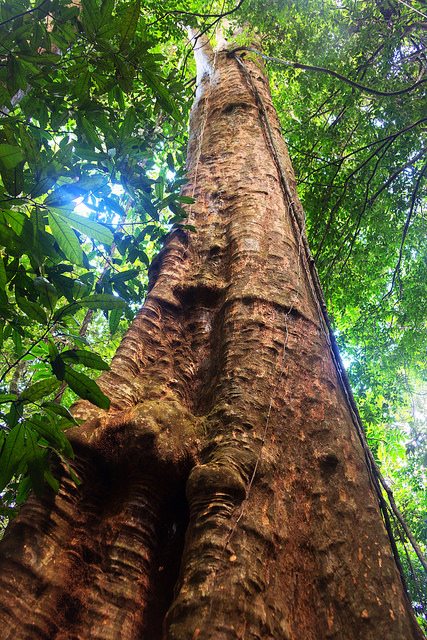
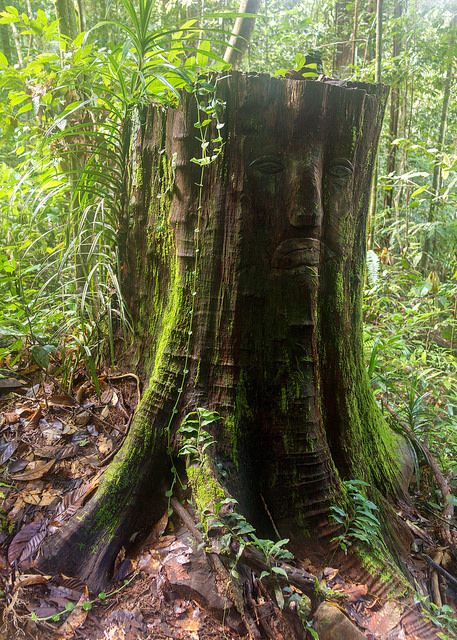
A strange red blotch appeared on my shorts above my right knee, and it took me a while to realize it was blood. I’d been bitten by a leech, which had switched spots and left its original wound bleeding profusely. Startled, I flicked the leech off and watched it writhe angrily on the ground. Later I realized I’d also been bitten on my other leg and one of my ankles. Whatever anticoagulant the Borneo leeches use must be powerful, because their tiny incisions continued to bleed for hours.
Just before I reached the waterfall a relatively large lizard darted out from the trail. It stopped on a fallen log, and – to my surprise – patiently posed for photos, despite the fact that I got pretty close. Its eyes were strikingly blue, so it seemed appropriate that my later Internet digging identified it as a Blue-eyed Angle Headed Lizard.
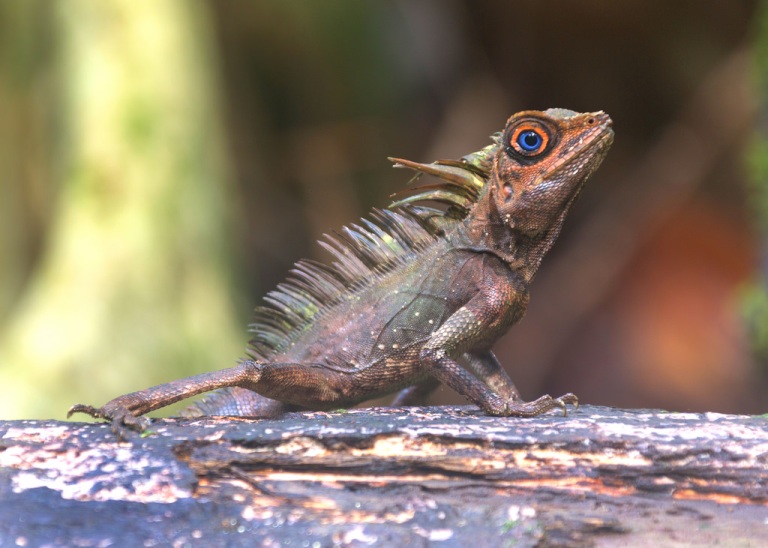
What I thought would be a single waterfall at the end of the trail turned out to be a cluster of four waterfalls tumbling into a small pool of cool, clear water. Suffering through the heat made it that much sweeter to jump in the pool for a swim. The setting was idyllic, and I had it entirely to myself.


I looped back on the Selang Trail and passed a nice viewpoint that overlooked the surrounding countryside. At the end of the hike I had a nagging sense that something was off-kilter and finally realized what it was: I hadn’t even wiped out once. Amazing!
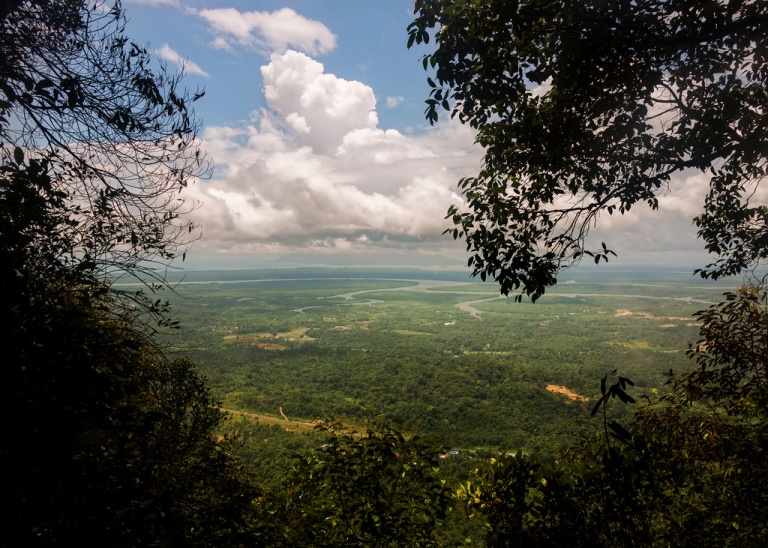
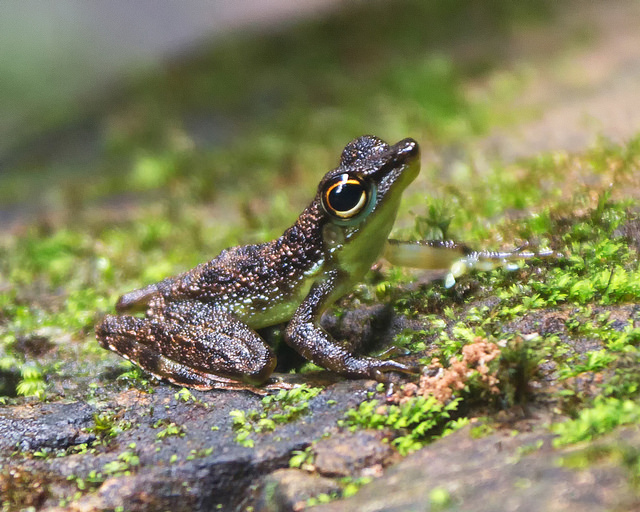
Kubah chewed me up, literally and figuratively. I must have frightened the other passengers on the return bus to Kuching. Drenched in sweat, mud on my legs, insect bites on my arms, big ugly patches of blood covering my shorts, blood dripping from my ankle. But one shower washed away those issues, and the experience of Kubah was more than worth it.
Before sunset I tracked down some more street art by Ernest Zacharevic, whose work I’d also seen in Penang. His two paintings in Kuching focused, appropriately, on orangutans.

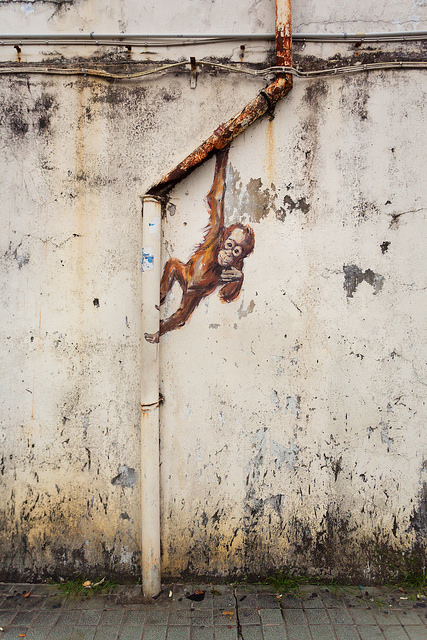

Semenggoh and Kubah had been great, but I was even more excited to see the rainforest wildlife at Bako National Park. I planned to head there the next morning and stay overnight.

Greatt read thank you
LikeLiked by 1 person